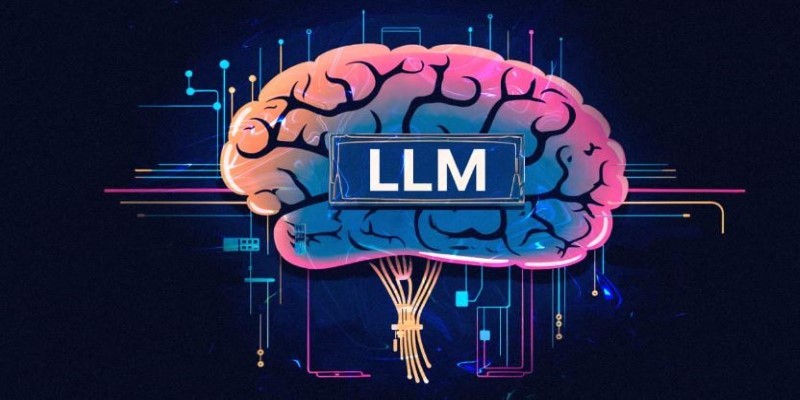Advertisement
Spatial intelligence is the ability to visualize, understand, and interpret the world around us in terms of shapes, spaces, and relationships. It helps us solve puzzles, design buildings, and even read maps. This unique skill is essential in everyday life, shaping how we create, explore, and interact with our environment.

Spatial intelligence, also known as visual-spatial intelligence, refers to the ability to visualize, manipulate, and interpret the relationships between objects and spaces. Coined by developmental psychologist Howard Gardner in his theory of multiple intelligences, spatial intelligence is vital for understanding dimensions, space, and visual data.
Think of it as the mental skill that allows you to picture how furniture fits in a room, solve a jigsaw puzzle, or perceive patterns in data.
Some signs of strong spatial intelligence include the ability to:
Despite being seen more actively in fields like art, design, architecture, and engineering, spatial intelligence plays a role in nearly every sphere of life.
Spatial intelligence is not just for professionals in design or construction. Here’s how it impacts our day-to-day living:
Every time you use Google Maps or find your way through unfamiliar territory, you're tapping into your spatial intelligence. Whether you're walking to a café or driving cross-country, this intelligence enables you to create mental maps and follow directions effectively.
Trying to pack your carry-on bag like a pro or fit groceries neatly into your tiny fridge? That's spatial intelligence at work. It helps you conceptualize how objects can fit together in an efficient way.
Athletes utilize spatial reasoning for strategies, like locating teammates or opponents on a field or predicting where the ball will land. Activities like yoga, gymnastics, or even dancing depend heavily on body-space awareness.
Artists, photographers, and graphic designers rely on spatial reasoning for movement, proportions, and composing balanced works of art or layouts.
Whether it’s solving puzzles like Rubik’s Cubes, designing new products, or organizing events with complex logistics, spatial thinking is your secret weapon.
Spatial intelligence is the backbone of many fields. Some industries and careers would be unthinkable without it.
Creating buildings, bridges, and cities that are functional and aesthetically pleasing requires an exceptionally high level of spatial reasoning. Architects visualize the end product during the initial sketches. Urban planners design cities by predicting traffic flow, green space needs, and the placement of public facilities.
One iconic example of spatial intelligence in architecture is the Guggenheim Museum in Bilbao, Spain. Frank Gehry used his spatial abilities to design the curved, stainless steel masterpiece, imagining how the unique structure would appear from multiple perspectives.
Engineers rely on spatial intelligence for designing everything from airplanes to microchips. Mechanical engineers imagine how parts of a machine interact, while 3D modeling tools allow for testing structural integrity virtually before physical production even begins.
Surgeons, particularly those performing minimally invasive or robotic surgeries, depend on spatial awareness for precision. Radiologists, too, interpret complex visual data from X-rays, MRIs, and CT scans. Understanding the relationship between anatomical structures in 3D is critical for diagnoses and treatments.
The gaming and VR industries thrive on spatial intelligence, whether it’s used by developers to create immersive environments or players strategizing in games. Virtual reality requires an acute understanding of space to ensure objects appear lifelike and interactions are seamless.
Space exploration is one of the ultimate examples of how spatial intelligence is shaping the future. NASA scientists and aerospace engineers visualize spacecraft trajectories, position satellites, and explore extraterrestrial terrains through advanced modeling and simulations.
The ability to think spatially is not fixed. Here’s the good news; like most forms of intelligence, it can be strengthened with practice and the right activities.
Not only can these exercises refine your skills, but they may also improve your ability to multitask and solve problems creatively.

With rapid advancements in technology, spatial intelligence is gaining more importance. Fields like AI, virtual reality, self-driving cars, and urban tech design rely on humans with strong spatial awareness.
Additionally, as industries lean further into automation, combining artificial intelligence with human spatial reasoning will unlock unprecedented capabilities. Think robots navigating labyrinthine warehouses or AI systems mapping out smart cities in real time.
To put it simply, spatial intelligence is not just shaping the world around us; it’s also shaping the future.
Spatial intelligence is a powerful tool that bridges human creativity and technological advancement. Its applications stretch across a multitude of fields, proving its importance in both our present and future. By fostering this form of intelligence, we can continue to innovate, adapt, and build solutions that tackle complex challenges. The impact of spatial intelligence is undeniable, making it a key driver in shaping a smarter, more connected world.
Advertisement

Curious about Gemini Advanced vs. ChatGPT Plus? This friendly guide compares both AI tools in writing, coding, speed, and everyday use to help you pick the right one

GitHub Copilot vs. ChatGPT — which one is better for programming tasks? Here's a simple breakdown of what each AI tool offers to coders, from beginners to pros

LAMs (Large Action Models) are the next evolution after LLMs, built to take actions instead of just generating text—but they still have a long way to go

Using ChatGPT daily? These 10 UI improvements could make your experience smoother, faster, and more organized. Here’s what users really want

How AI-driven chatbots can streamline business operations, improve efficiency, and boost customer satisfaction effectively.

Worried about downloading the wrong app? Here's how to spot fake ChatGPT apps on the Apple App Store and make sure you're using the official version

Looking for a private AI chatbot? DuckDuckGo AI Chat lets you use ChatGPT, Claude, and more—without tracking or saving your conversations

Wondering if Microsoft Copilot is better than ChatGPT? Here are 4 simple reasons why Copilot might fit your workflow better

Supercharge your ChatGPT experience with these 10 Chrome extensions that improve usability, speed, and productivity.

Explore 8 practical improvements that could make ChatGPT’s Deep Research tool smarter, faster, and more useful.

AI tools are facing a training data shortage, but 6 creative solutions—like synthetic data and federated learning—are keeping them on track

From AI fatigue to gimmicky features, these 7 signs show the AI boom may have already peaked. Here's what you need to know.